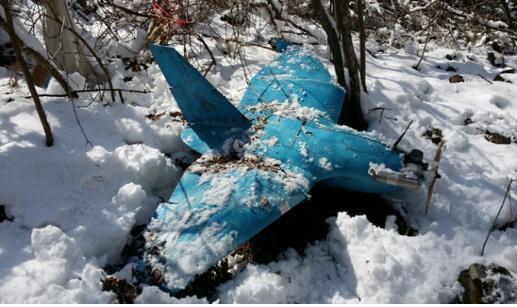안보당국에 있어 가장 중요한 덕목은 신중함과 자제이다. 특히 북한과 같이 예상하기 힘들고 도발적인 국가들을 상대함에 있어 이 덕목들을 그 중요성을 아무리 강조해도 지나침이 없다.
하지만 이번 주 국방부는 북한제로 추정되는 소형무인기와 관련한 비난여론을 잠재우려고 그랬는지, 이와 같은 덕목을 지키지 못한 듯하다. 국방부는 우리 군은 그 동안 군사 기밀이라면 공개하지 않은 금강, RF-16 정찰기를 공개했고, 이어서 송골매와 리모아이라는 무인기도 공개했다.
여기에 더해, 우리 군의 첩보수집 능력을 북에 노출하면 안 된다고 되풀이하던 국방부는, 북한의 무인기가 공격형 무인기 10대를 포함해 300여대가 된다고 밝히기도 했다. 소형무인기 관련 대북 억지력 과시, 그리고 국민들의 안보 불안감을 잠재우기 위한 조치였다고 하지만 신중하지 못했다는 비난의 목소리가 크다.
이런 정보들은 박근혜 대통령이 우리 방공망에 대한 문제에 대해서 질타한 이후 공개되었다. 일각에서 국방부가 청와대 눈치만 본다고 비난하는 이유이다.
<관련 영문 기사>
[NEWS FOCUS]
Defense Ministry flounders over drone commotion For security authorities, prudence and restraint are the most crucial virtues -- particularly when they are dealing with an unpredictable, provocative adversary like North Korea.
But this week, South Korea’s Defense Ministry seemed to have forgotten those virtues as it struggled to mitigate the criticism over its failure to detect three drones, presumably from the communist state.
The ministry on Tuesday revealed a series of key reconnaissance assets including its unmanned aerial vehicles, which it has long kept as “military secrets.” The assets include Geumgang and RF-16 reconnaissance aircraft, and two indigenous drones.
The ministry went a step further by announcing that Pyongyang currently runs some 300 unmanned military planes. It has long been reluctant to reveal its level of knowledge about the North Korean military as it could help the North find alternatives to evade Seoul’s intelligence networks.
The unveiling of all these came just a day after President Park Geun-hye denounced the military for “problems” with the country’s air defense and its ground-based reconnaissance system. This is the reason why critics argue the revelations of what it called “military secrets” are partly intended to placate the presidential office.
The ministry has said that it revealed to the media its monitoring assets to show off its deterrence capabilities against the communist state and to help rising public concerns over national security. But the revelations seemed to have further eroded public confidence in the military.
The ministry has also been under fire for its handling of the drone crashes.
When the first drone was found on March 24 in Paju, close to the Demilitarized Zone in Gyeonggi Province, it did not put much weight into the possibility that the North deployed the drone for military purposes. Some argued that the ministry apparently wanted to downplay the drone case as it would bring the weak points of the South’s air defense to the fore.
After the second drone was found on Baengnyeongdo Island on March 31, the ministry then said that chances were high that the drones were sent by the North.
As the criticism surged for the drones having filmed the presidential office of Cheong Wa Dae, marine facilities on the western border islands and potential infiltration routes, the ministry appeared to be downplaying the case again.
The ministry said that the “entry-level” drones did not pose any serious military threats. It also defended itself by repeating that current radar systems were not designed to detect small irregular flying objects.
On Friday, the ministry is to announce the interim result of its probe into the crashed drones. The announcement comes amid keen political attention to the security issue ahead of the local elections slated for June.
Security experts argue that rather than trying to fend off the public criticism for a “porous” defense, the South Korean military should take a period of extensive soul-searching and thoroughly review its defense posture.
They also say that it should exercise more prudence and restraint in handling the unpredictable North Korea.
By Song Sang-ho (
sshluck@heraldcorp.com)








